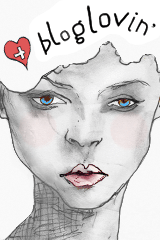Jonathan Jones and The Loves of the Artists
0
 |
| A visitor to Venice in the early 16th century reckoned the city had 20,000 courtesans. Un visitatore a Venezia nei primi anni del 16 ° secolo calcolò che la città aveva 20.000 cortigiane. |
Jonathan
Jones è forse il più importante e temuto critico d'arte americano. Il suoi
articoli sul Guardian possono decidere il destino della carriera di un artista
o il successo di una mostra. In questi giorni esce, per il momento solo in lingua inglese, il suo nuovo libro, che già inizia a far discutere. Il libro di Jonathan Jones "Gli
amori degli Artisti", dimostra come
la storia del Rinascimento sia la storia di una rivoluzione sessuale.
I grandi artisti del 15 ° e 16 ° secolo
non erano solo visionari, ma erano
amanti. Jonathan sostiene che i famosi nudi di Michelangelo
e Tiziano non sono immagini
astratte di bellezza ideale, ma le
espressioni erotiche dell’amore e del desiderio,
e che, al fine di comprendere il Rinascimento,
dobbiamo capire la vita sessuale degli
uomini e delle donne che lo hanno
definito. Uomini come Raffaello,
che dipinse ossessivamente
la sua amante La Fornarina nel nudo, Michelangelo, che ha fatto bei disegni di corpi
maschili nudi per rappresentare
il giovane che adorava, e molti altri. "Gli amori degli Artisti" mostra che il Rinascimento
ha inventato l’erotismo come lo conosciamo, e che i nuovi modi di pensare al sesso sono fondamentali per comprendere non solo la cultura dell'arte, ma la
cultura europea nel suo complesso.
 |
| Bronzino was probably gay in today’s language Bronzino, nel linguaggio odierno, era probabilmente omosessuale |
 |
| Leonardo said eroticism is one of the greatest powers of art. Leonardo ha detto che l'erotismo è una delle più grandi potenze d'arte. |
Jonathan Jones
The Loves of the Artists: Art and Passion in the
Renaissance
AMAZON












.jpg)








